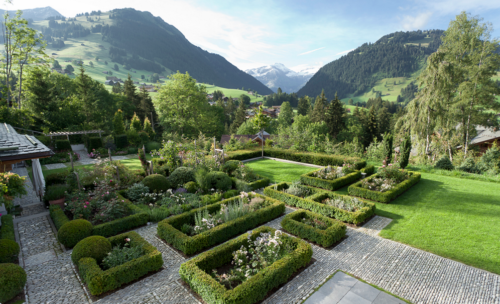
An Interview with Louis Benech, Landscape Designer Extraordinaire
In the world of the French château, Louis Benech is king. The longtime partner of famed shoe designer Christian Louboutin, Benech is landscape artist– a self described paysagiste (a mashup of the French words for “country” and “artist”)– who works primarily on designing and restoring the gardens of grand, historic estates, bringing them back to the lavish wonder of previous centuries. (The title of “France’s greatest living landscape designer” is often tossed around in connection with Benech’s name.)
Initially, Benech started out with a career in law before realizing his true calling lay in nature, and switched to working in a nursery during the 1980s. Gardening was not an entirely new concept to him; as he told GC, his earliest gardening memories are of “saving Nasturtiums in my grandmother kitchen garden” or “weeding herbaceous borders in my (other) grandmother’s garden.”
When Benech first began to make his transition into a career in the outdoors, he thought to specialize in the world of dendrology. “The start of my passion was a love of trees,” Benech told GC. “My first dream was to be ‘ingénieur des Eaux et Forêts‘” (a woodland expert). But the universe had other plans; within a decade of beginning his new line of work, Benech made a name for himself in 1990, after being chosen for the honor of renovating the iconic Jardin des Tuileries. Benech still considers that process of selection as one of the most challenging in his career. “Everything I did before was professional for private gardens in an amateur organization while a public project needs administrative vocabulary and a different type of organization,” Benech told us. “This was terribly helpful but did not train me!” In the end, though, it payed off: he is in-demand for gardens (city and country, public and private) across the world, and has projects on almost every continent.
Benech’s style of work is mirrored in his two favorite plants: on the one hand, the dense stature of Fagus sylvatica ‘Asplenifolia’ (cut leaf European beech) with its solid shape, and on the other, the fragile beauty of Romneya coulteri, a type of poppy with delicate white petals and a sunny yellow center. Castle gardens have a similar duality about it, balancing the structure and rigidity of French château architecture with the tenderness of nature.


















































